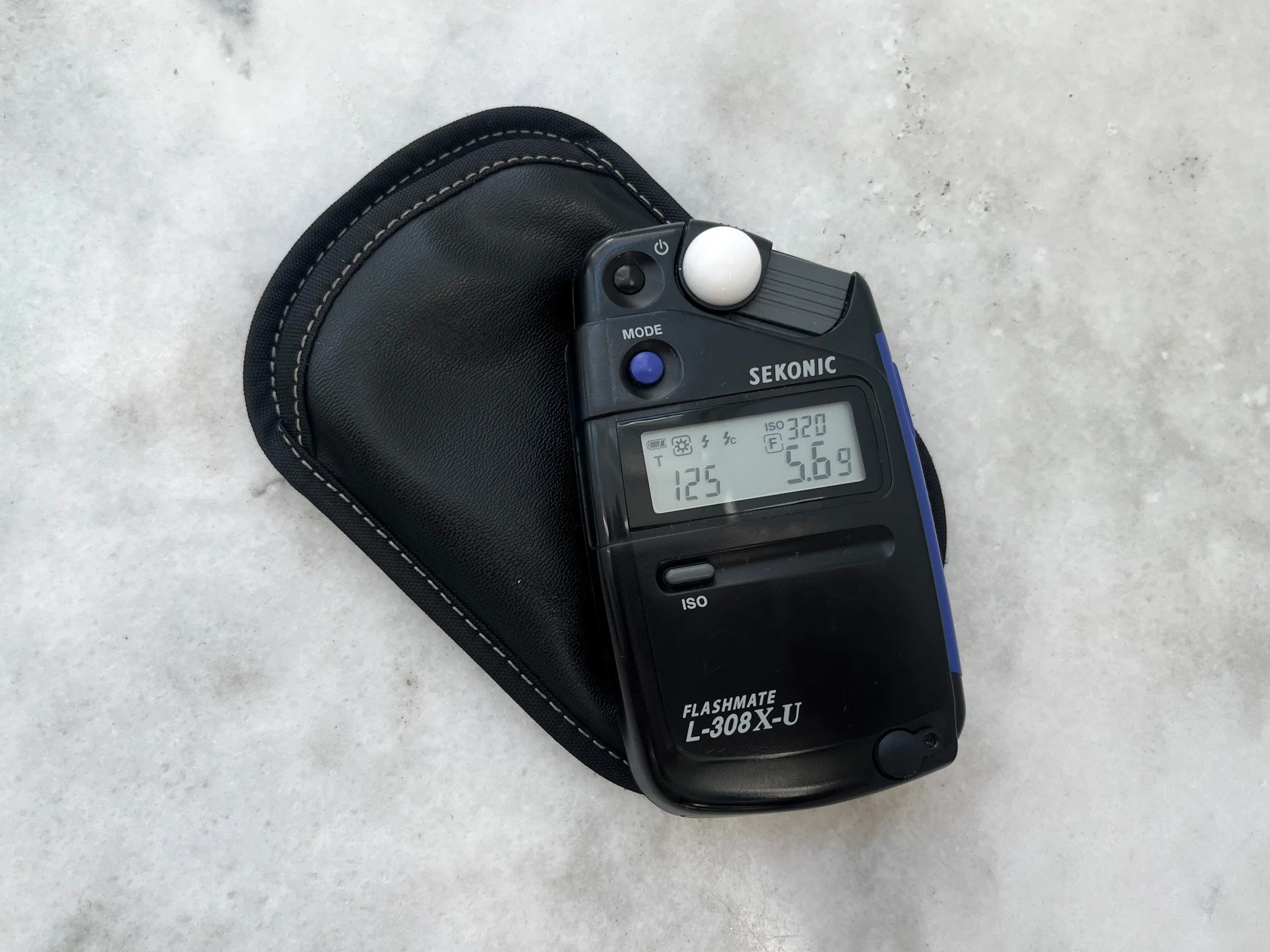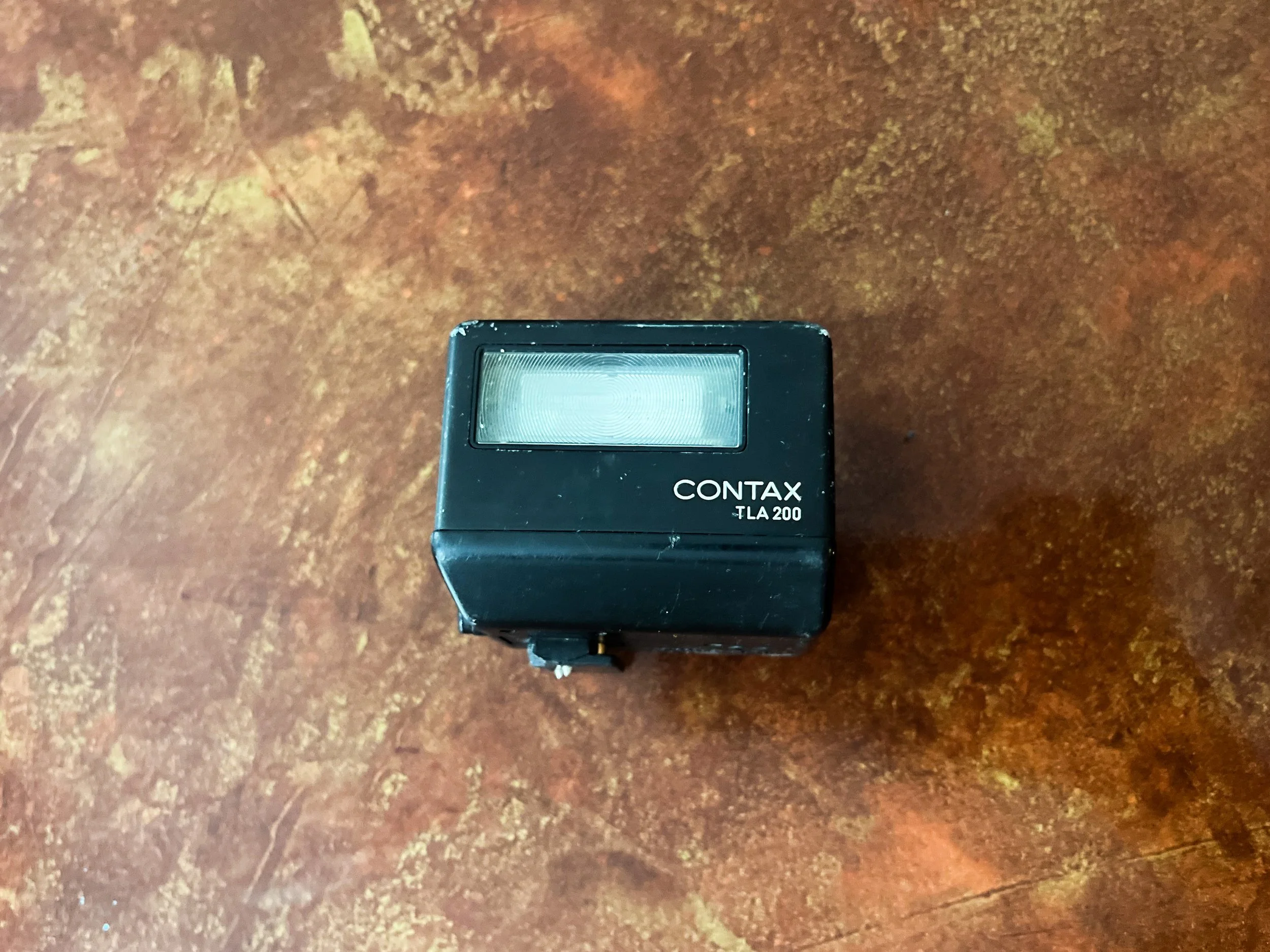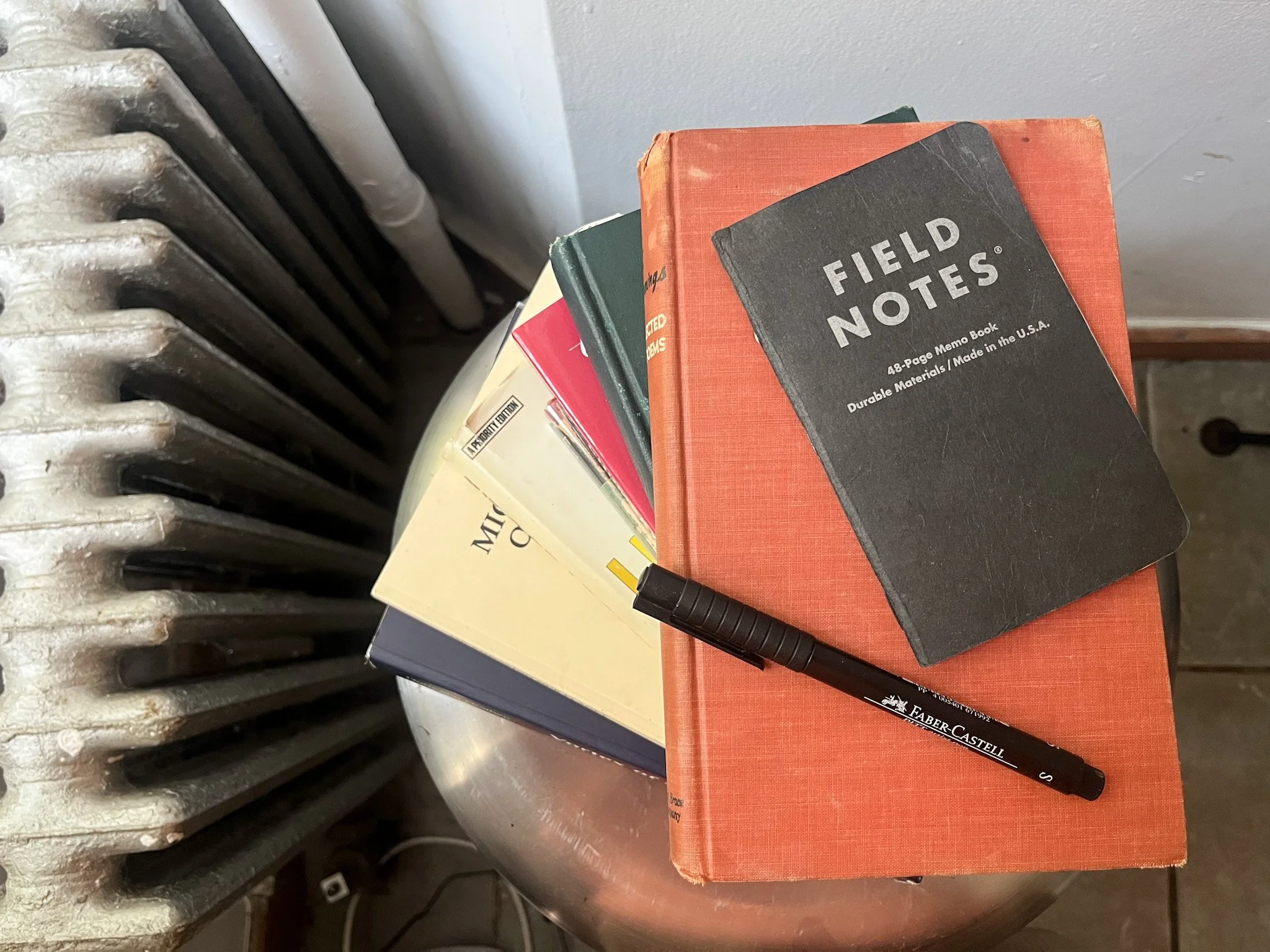6 Accessories Every Film Photographer Needs 2023
If you’re just entering the world of film it can be confusing and overwhelming to decide what gear is really essential to your practice, and what will only be superfluous extra weight. Film is a medium that is extremely harsh on mistakes. This makes the need for precision and accuracy paramount. Essential accessories become not just tools, but extensions of the photographer's vision and technique, ensuring that every shot is maximized for its potential. From maintaining the right exposure with a light meter to stabilizing shots with a sturdy tripod, these accessories significantly enhance the quality of the final image and the overall film photography experience. Here’s our list of must haves for every film photographer.
Light Meter
A Light meter is a tool that measures the intensity of light and helps you maintain consistent results across your rolls. For a studio photographer, this tool is often a no brainer considering how many lighting variables and changes are at play. The question I hear the most is, “Why would I buy a light meter if my film camera has a built-in internal meter?” Typically when beginner photographers use the internal light meter on their film camera, they’re moving shutter speeds and apertures fast and loose until the arrow indicates correct exposure. A light meter slows down this process and actually helps you learn the relationship between aperture, ISO, and shutter speed. Having a light meter will progress you more quickly in developing your personal style.
I swear by Sekonic and would recommend any of their light meters but the one I use is the Flashmate L-308 X-U.
External Flash
There are so many reasons to have an external flash. Compensating for lack of light is the first. An external flash can effectively light up the subject, making it possible to capture images in darker environments, especially if you're using a film with a lower ISO sensitivity. However, a flash can help in situations where the main light source (like the sun) creates harsh shadows on the subject. A flash can be used as fill light to soften those shadows and achieve a more balanced exposure. Do your research on fill lighting, chances are some of your favorite “natural light” photos were actually made using flash as a fill. One of the best reasons to have a flash as a beginner is an external flash, with its adjustable settings and consistent output, provides a level of predictability in how scenes are lit, aiding in achieving consistent results. A flash can act as a hack for consistency if you are struggling with things like exposure.
The flash I use is the TLA200, a flash built for the Contax, but will work with a hot shoe on just about any film camera. This flash is portable, reliable, and looks fantastic. However, it has gained a bit of a cult following in recent years causing big spikes in price.
Camera Bag
First and foremost, a film camera bag offers protection. Film cameras and lenses are delicate, often made of sensitive components that impact, dirt, or moisture can easily damage. A good film camera bag is designed to cushion against shocks and protect against environmental factors. With its various compartments and pockets, a film camera bag ensures everything is organized and easily accessible. An organized film camera bag allows for quick changes of lenses or rolls of film and makes a good impression if you’re showing up to do a paid/commercial shoot. Carrying gear, especially for extended periods or over long distances, can be taxing. If you’re a medium-format shooter I dont have to explain this to you. Film camera bags are designed with ergonomics in mind, often featuring padded straps or back supports that distribute weight evenly, making it easier and more comfortable to carry gear.
I love going second-hand on a film camera bag. You can find a bag on eBay from a time when professional photography was entirely film, so often vintage bags will be more optimized for a film photographer. For something more modern and check out the link below.
Small Book + Pen
You can use a notebook to log details about each shot, such as shutter speed, aperture, location, time of day, and lighting conditions. This can be incredibly useful when reviewing developed images later to understand what settings yielded the best results and helps you avoid the same mistakes in the future. For those who develop their own film, a notebook is essential for keeping track of development times, chemicals used, dilution ratios, and any adjustments made in the process. Over time, this becomes a repository of knowledge, enabling you to refine your development process. This is the function I utilize my notebook for. If you are using techniques like burning, dodging, and filters, it’s crucial you write those times/specs down so you can recreate an identical print in the future.
The Field Notes brand book is the perfect size that lets you write down exactly what you need an never gets in your way.
Tripod + Cable Release
A tripod is a must for any film photographer. When the light is low, you still want to get the shot. Any unintentional movement during exposures in low light conditions or when using slow shutter speeds can lead to motion blur. If you're capturing motion, long exposures are essential. A tripod ensures the film camera remains still throughout the exposure, rendering the stationary elements sharp against the intended motion blur. However, even on a tripod, the act of pressing the shutter button can introduce camera shake. A cable release allows you to activate the shutter without touching the film camera, ensuring absolute stability during the exposure. Additionally, some shots might require exposures longer than your film camera's built-in settings allow. A cable release often features a 'bulb' mode, letting you keep the shutter open for an extended period without holding the button down manually. Buying these two pieces of equipment in conjunction with each other ensures you can perfectly frame and expose every shot with intentionality.
©Andrew Bradley via Flickr
Durable Camera Strap
Durable is the keyword here. A robust film camera strap provides a safety net for your film camera. If you were to accidentally drop your film camera or slip while walking (no one is immune). A durable strap would bear the weight and prevent the film camera from hitting the ground. Considering the potential cost of repairs or replacement for vintage or rare film cameras, this is a significant safeguard. It's easier than you might think to set down a film camera momentarily and then forget where you placed it, especially in dynamic environments or when deeply engrossed in the shoot. A strap ensures the film camera remains attached to you, reducing the chances of misplacement. There will also be times during a shoot when you need both hands free—to adjust a tripod, change film rolls, or interact with a subject. A film camera strap lets you do this without putting the film camera down, keeping it both accessible and safe from potential harm.
One tip I have for buying camera straps is to buy the camera strap that was made specifically for your film camera. With film cameras, this can take a bit of hunting but this ensures the ergonomics of your film camera body were in mind when the strap was made. Otherwise, buy a strap that you are beyond confident can support the weight of your camera and be aware of how the strap detaches from the film camera to avoid slippage over time.






